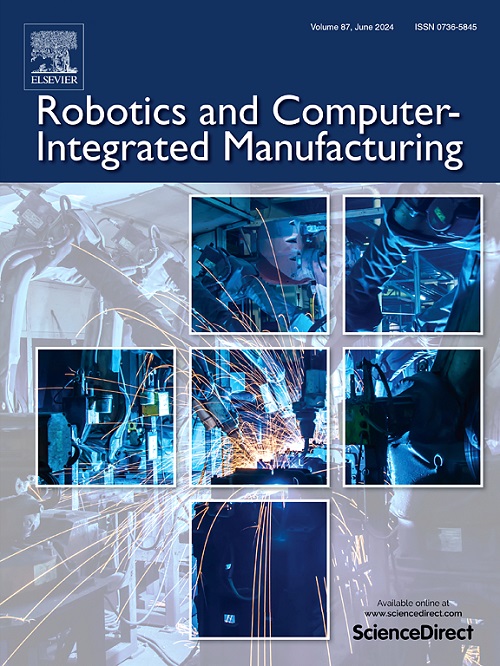数字孪生车间仿真参数的建模与自适应演化方法
IF 11.4
1区 计算机科学
Q1 COMPUTER SCIENCE, INTERDISCIPLINARY APPLICATIONS
引用次数: 0
摘要
数字孪生(DT)模型可以准确预测车间的未来状态,并及时识别潜在的问题、异常情况或优化机会。然而,传统的生产仿真方法没有考虑实体属性的时间特征。在物理实体的生命周期中,其属性的变化会增加DT仿真参数的误差。因此,采用深度学习算法对数字孪生车间(DTSF)的仿真参数进行建模和进化,以提高仿真精度。首先,设计了深度学习与离散事件仿真的交互机制。然后,提出了一种序列回归变分自编码器(SRVAE)对DT时间参数进行建模。在此基础上,提出了在线讲师算法,通过在线数据对SRVAE进行更新。该方法提高了DTSF的仿真精度,同时允许其参数自维护。并通过实例验证了该方法的有效性。本文章由计算机程序翻译,如有差异,请以英文原文为准。
A modeling and adaptive evolution method for simulation parameters of digital twin shop floor
Digital twin (DT) model can accurately predict the future state of the shop floor and promptly identify potential problems, abnormal situations, or optimization opportunities. However, traditional production simulation method without considering the temporal characteristics of entities’ attributes. In the life cycle of physical entities, its attributes’ change will increase the DT simulation parameters’ error. Therefore, deep learning algorithms are used to model and evolve the simulation parameters of the digital twin shop floor (DTSF) to improve simulation accuracy. Firstly, the interaction mechanism between deep learning and discrete event simulation is designed. Then, a sequential regression variational autoencoder (SRVAE) is proposed to model the DT temporal parameters. Furthermore, the online instructor algorithm is proposed to update SRVAE through online data. This approach improves the simulation accuracy of DTSF while allowing its parameters to be self-maintained. And the effectiveness of the proposed method is verified by a case study.
求助全文
通过发布文献求助,成功后即可免费获取论文全文。
去求助
来源期刊
CiteScore
24.10
自引率
13.50%
发文量
160
审稿时长
50 days
期刊介绍:
The journal, Robotics and Computer-Integrated Manufacturing, focuses on sharing research applications that contribute to the development of new or enhanced robotics, manufacturing technologies, and innovative manufacturing strategies that are relevant to industry. Papers that combine theory and experimental validation are preferred, while review papers on current robotics and manufacturing issues are also considered. However, papers on traditional machining processes, modeling and simulation, supply chain management, and resource optimization are generally not within the scope of the journal, as there are more appropriate journals for these topics. Similarly, papers that are overly theoretical or mathematical will be directed to other suitable journals. The journal welcomes original papers in areas such as industrial robotics, human-robot collaboration in manufacturing, cloud-based manufacturing, cyber-physical production systems, big data analytics in manufacturing, smart mechatronics, machine learning, adaptive and sustainable manufacturing, and other fields involving unique manufacturing technologies.

 求助内容:
求助内容: 应助结果提醒方式:
应助结果提醒方式:


